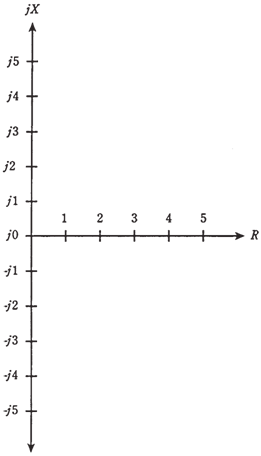RX plane:
Recall the planes for the resistance (R) and inductive reactance (XL). This is same as the upper right quadrant of complex number plane shown in the Figure given below.
Likewise, the plane for the resistance and capacitive reactance (XC) is same as the lower right quadrant of complex number plane.
Resistances can be represented by nonnegative real numbers. Reactances, whether they are inductive or capacitive, correspond to imaginary numbers.
No negative resistance
There is no such thing, as negative resistance. That is to say, one can't have anything better than the perfect conductor. In some of the cases, a supply of direct current, like a battery, is treated as the negative resistance; in the other cases, you can have a device which behaves as if the resistance of it were negative under certain changing conditions. Generally, in the RX (resistance-reactance) plane, resistance value is always positive in nature. This means that you can remove negative axis, along with upper left and lower left quadrants, of complex number plane, obtaining the half plane as shown in the Figure.
Reactance in general
Now you can get a better idea that why capacitive reactance, XC, is considered negative. It is an extension of the inductive reactance, XL , into realm of negatives, in a

Figure-- The complex impedance RX plane.
way which cannot generally occur with the resistance. Capacitors behave like negative inductors. Interesting things occur when capacitors and inductors are combined.
Reactance can vary from extremely large negative values, through zero, to the large positive values. Engineers and physicists consider reactance to be imaginary. In mathematical model of capacitances, impedance, and inductances manifest themselves perpendicularly to resistance.
The general symbol for the reactance is X; this encompasses inductive reactance (XL) and capacitive reactance (XC) both.